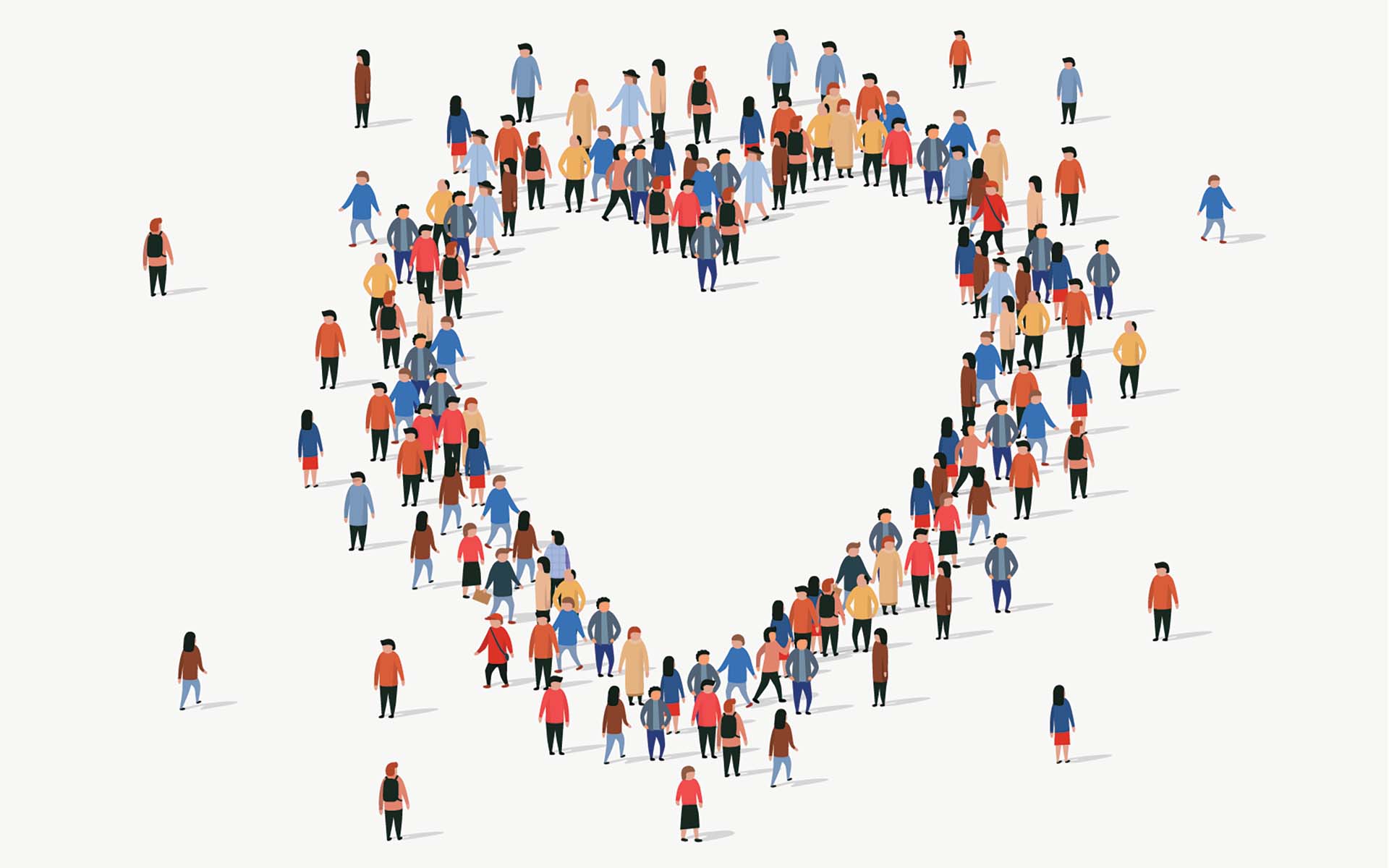What makes our communities thrive is not only the paid staff working for our towns and cities, but also hundreds of residents volunteering on boards and committees, in local nonprofits, and other organizations—not to mention countless individuals who jump in to informally volunteer when there’s a need.
One of the most important (free!) tools for strengthening our communities is gratitude. Research confirms that experiencing gratitude enhances trust and empathy, nurturing cooperation and effective problem-solving in communities. Practicing gratitude for each other also leads to upstream reciprocity, which means that feeling gratitude increases our propensity not only to help someone who helped us but also to “pay it forward” to strangers. Try this gratitude practice to help you notice, appreciate, and shift your mindset toward ways of being in community with others that benefit us all while respecting our differences.
A Practice to Lead with Gratitude in Your Community
A Guided Meditation to Lead with Gratitude
In this practice, you will be invited to extend gratitude to people or groups in your community belonging to three categories. Before we start the practice, recall a single person or a group from each of the following categories: A person or group you admire and like; a person or group you don’t know well; a person or group with whom you often disagree.
- Start by coming to a comfortable posture that allows you to be alert and relaxed at the same time. Lowering or closing your eyes, direct your attention inward and settle the mind on your breath moving naturally, in and out of your body. If it’s helpful, place your hand on the chest and notice as it rises and falls, connecting with your breath and your body. Stay here for a couple of rounds of breathing at your own pace.
- From this place of connection with your breath and body, recall a person or group working in your community that you like. Think of the ways they serve your community. Now proceed to practice gratitude in three steps—Notice, Appreciate, and Shift.
a. Notice. Notice how it makes you feel when you consider the ways this person or these people benefit your community. Maybe you sense a softening in your chest, feelings of kindness, or gentle thoughts arising. Make space for whatever emerges. Stay here for a couple of minutes.
b. Appreciate. From this place of kindness in yourself, extend gratitude to this person or people. Silently repeat these phrases, or use your own words: I am grateful for the time, energy, and gifts you bring to our community. I appreciate you and your service to our community.
c. Shift. Create space in your mind and body for a natural shift in your mindset or inspired actions that express gratitude to this person or people. Explore how this gratitude practice might have shifted how you will listen, communicate, or relate with them, or if you’d like to take other actions like sending an email or a handwritten note to thank them. No need to force ideas. If nothing comes up, it’s OK to thank them in your mind and move on to the next step. - Next, recall a person or group working in your community whom you don’t know well. Think of the ways they serve your community. Now repeat the three steps in the gratitude practice—Notice, Appreciate, and Shift.
- Lastly, recall a person or group working in your community with whom you tend to disagree. Think of the ways they serve your community. Although you disagree with them, can you see any gifts they bring to you or your community? Perhaps they bring a different perspective you hadn’t considered, or they’re compelling the community to look at an important and overlooked issue. Make space to see their contributions and then play with the three steps in the gratitude practice—Notice, Appreciate, and Shift.
- Before ending the practice, take a moment to appreciate your good intentions and your commitment to leading with gratitude in all your actions and interactions in your community.
READ MORE
A 12-Minute Meditation to Rest Your Body in Gratitude
Take a restorative moment to release tension and feel deeply into gratitude for your hard-working body.
Read More
How to Make Gratitude a Daily Habit
It’s easy to focus on what we want rather than what we have. But when we shift our awareness to the present moment, we begin finding moments of gratitude in everyday life.
Read More
How to Practice Gratitude
Practicing gratitude has incredible effects, from improving our mental health to boosting our relationships with others. Explore ways you can be more appreciative in our mindful guide to gratitude.
Read More









